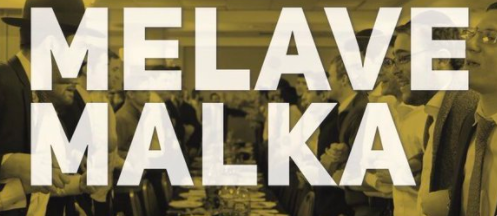
Our Torah reading finds Yaakov Avinu on the run. Last week’s parasha concluded with Rivkah warning Yaakov to escape his brother’s wrath after he had received the blessings instead of Esav. Now, after strengthening himself with intense Torah study on the way, Yaakov proceeded to the mission of finding a wife. Parashat Vayetzei tells of the whirlwind of events that Yaakov experienced in this period- from his vision of the ladder and angels to meeting his cousin Rachel, from working for her father Lavan to marrying his daughters and establishing a family and a future nation. Esav, meanwhile, took a wife from Yishmael’s family, and waited for his chance at revenge.
After awaking from prophetic dreams about his future nation, Yaakov realized that Har Hamoriah, where he had just slept and where Avraham had brought Yitzchak as a sacrifice, was even more special than its history suggested:
And Yaakov awoke from his sleep, and he said, “Surely Hashem’s presence in this place- but I hadn’t known!”
-28:16
Yaakov then built and consecrated a stone alter- a memorial to the holiness of the place. Finally, he renamed the city as a testimony to its greatness:
And he called the name of that place ‘Beit El’ (‘The House of God’); however, ‘Luz’ was the original name of the city.
-28:19
Rabbenu Bechayeh makes a subtle observation of this verse: why was it necessary for the Torah to teach us now, as the place was given its new title, what it had once been called?
Before we get to his answer, we’ll need to see some Talmudic teachings… about the Revival of the Dead, techiyat hameitim.
Our Rabbis tell us that there is a small bone on the spine called the luz bone*, which is the only part of the body that does not necessarily decompose after death. This is why it serves a special purpose…
Adrionus… asked Rabbi Yehoshua ben Chananya, telling him, “From where [what part of the body] will God revive man in the future?”
He said to him, “From the luz that is in the spine.”
-Midrash Rabbah, Bereishit
Rabbi Yehoshua, when questioned further, demonstrated that the bone could not be burned, dissolved, or otherwise destroyed. Hence, Hashem will use this very bone as a ‘building block’, the foundation for people’s reconstructed bodies, at the End of Days.
Fortunately, our Rabbis also tell us how to strengthen this bone to enhance our chances of coming back to life: eat the Melava Malkah. In case you’re not familiar with the term, it refers to a post-Shabbat meal held in honor of the ‘Shabbat Queen’ and the holiness of the day we have just enjoyed. In fact, the words Melava Malkah actually mean “Accompany the Queen”; holding this additional meal shows that we are sad to see the Shabbat go, and choose to hang on to its holiness.
The Shibalei Haleket explains that the luz is unique among all bones in that it does not benefit (i.e. get fortified) from anything a person eats- except for what he eats on Motzei Shabbat. Apparently, this speaks to how the bone is able to derive ‘strength’ from the Melava Malkah. Moreover, the Yaavetz deduces that the fact that it is does not benefit from eating is precisely why the luz does not decompose; because it exists independently of nutrition and satiation, it alone will continue to exist after death, unburdened as it is by physical needs!
Now we can return to our initial question: why does the Torah go out of its way to tell us about the holy site’s original name? Rabbenu Bechaye suggests that it is intended as an allusion to the luz bone. Being that the luz is the ‘source’ of a person’s ‘rebirth’, we must assume that it is fundamental to the human body from the start.
Similarly, we know that Hashem created the world starting with Yerushalayim, using that as the ‘foundation’ from which He continued to form the rest of the globe. (-This concept is found in the Gemara Yoma; we may see the text next week.) The Torah thus teaches us that Yerushalayim is like the luz: it too will be where techiyat hameitim begins, a product of its original importance.
We have several unresolved issues at this point, which we will hopefully get to next week. We wonder still about the apparent connection between the end of Shabbat and the revival of the dead, and how Yaakov and Yerushalayim relate to it. Still, we have begun to see yet another example of the infinite depth that the Torah has to offer. Let’s try to pick things up from here next week.
Have a great Shabbat!
Elli Schwarcz
Elli Schwarcz is an alumnus of the Toras Moshe, Ner Israel, and Carteret Yeshivos, and has been involved in Jewish outreach for almost 15 years. He is a Hebrew School and English Language Arts teacher, and has a Master’s Degree in Counseling from Johns Hopkins University. Of all his pursuits, Elli most enjoys teaching high-level Jewish thought and Talmud to teenage boys, exposing them to the beauty and wisdom of their heritage while highlighting their own ability to engage in advanced Torah learning. Elli lives in Lakewood, New Jersey, with his wife and children.